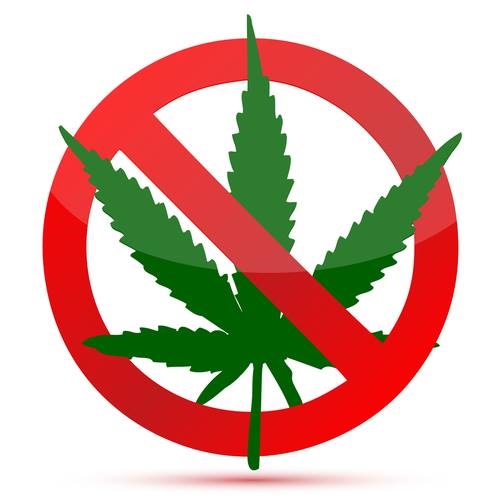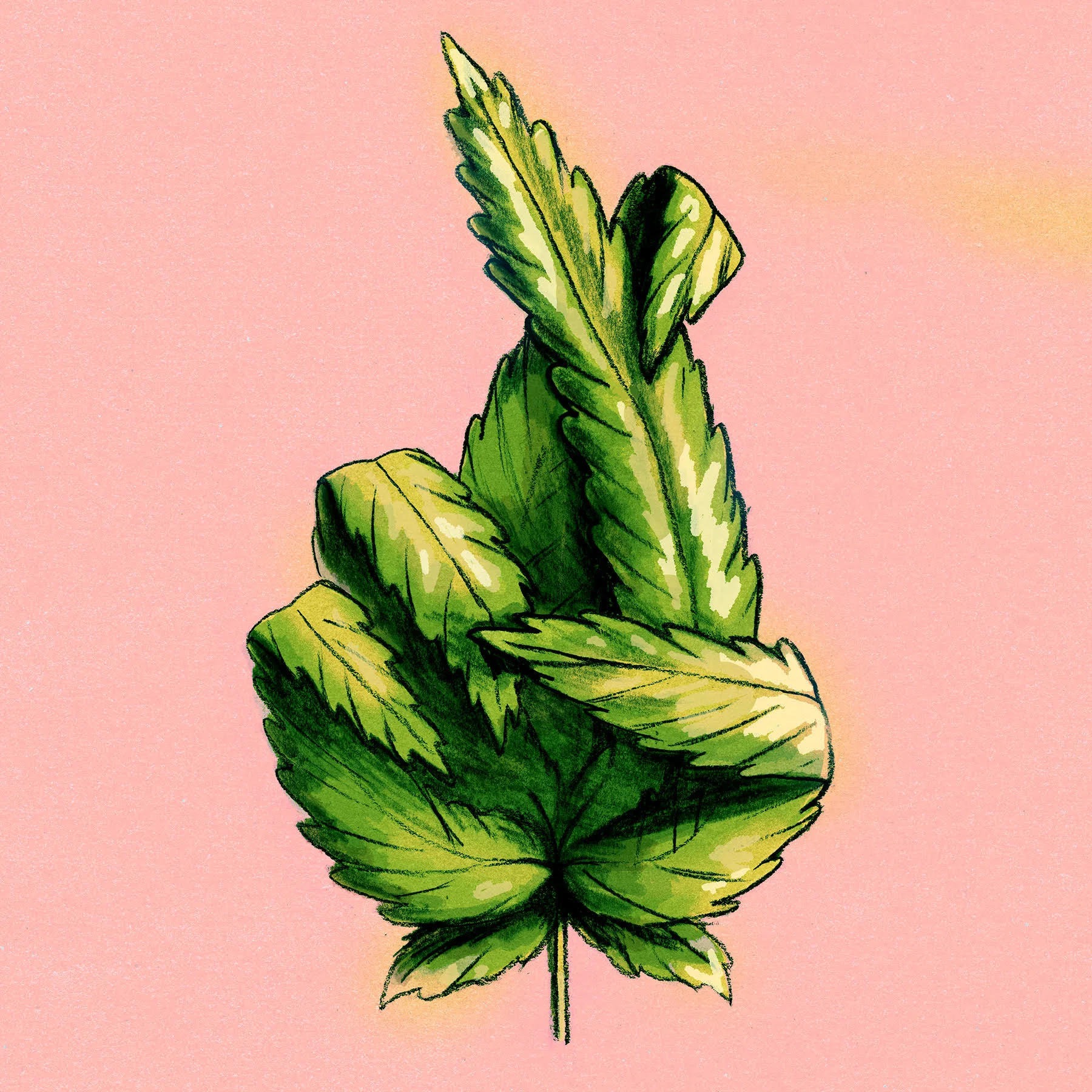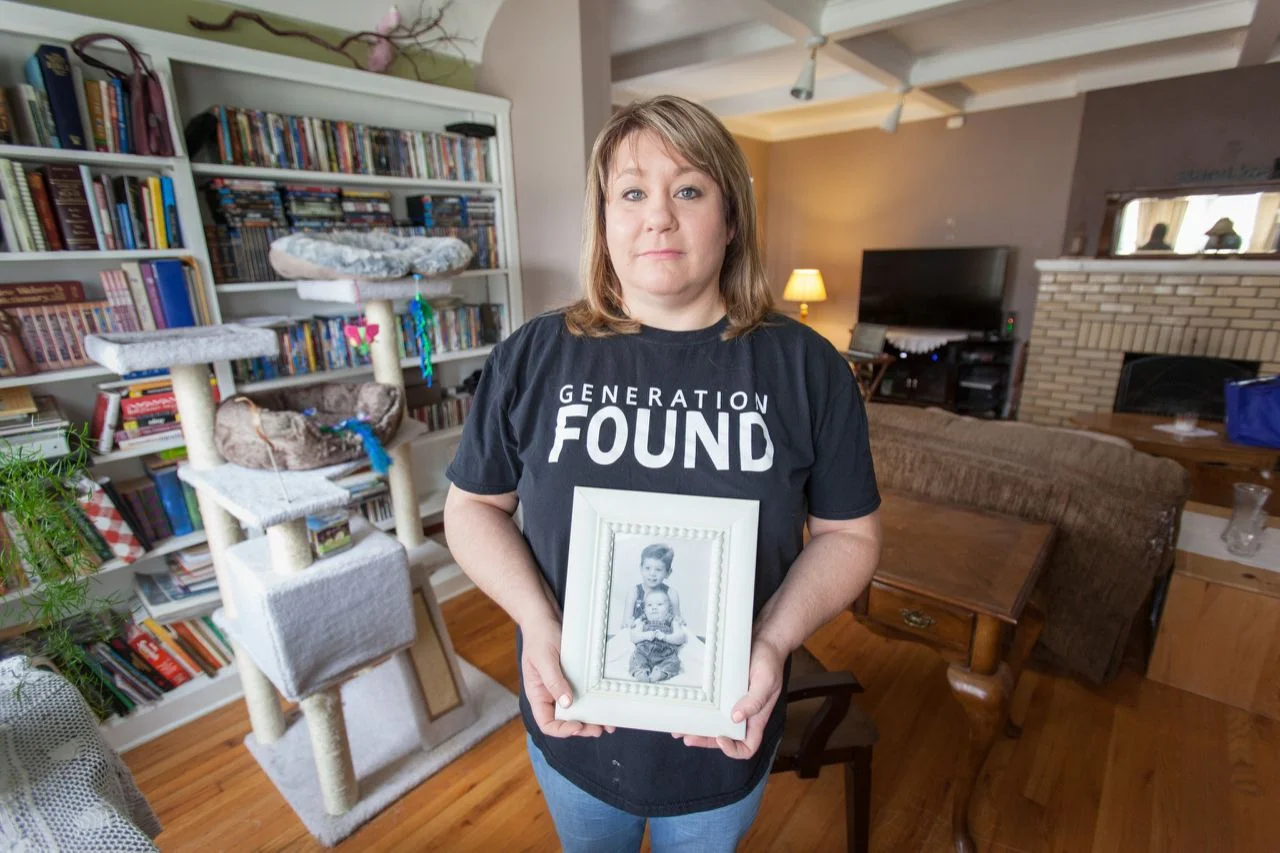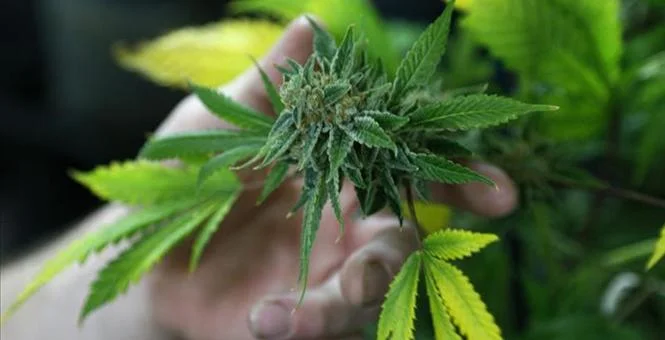During the 21 years that California’s multibillion-dollar unregulated medical marijuana market thrived, cannabis operators learned to create elaborate schemes to disguise their connections to unlicensed shops. And now that some operators are also tied to valuable licensed businesses, Montes said, double dippers have become even more careful about burying their identities.
Read MoreStay in the know with the latest on our fight against the legalization of marijuana
Have an article that you would like us to post? Share it on our Facebook page!
10 Things We Know (As In, Actually Have Published Evidence For) About Cannabis And Health→
/Ten years ago, when you referred to cannabis, you were talking about dried plant material that people smoked,” says Ryan Vandrey, associate professor of psychiatry and behavioral sciences at the Johns Hopkins School of Medicine.
“Now, cannabis — which refers to marijuana and hemp — is a blanket term that could also mean hemp oil, topical creams, CBD products, high-THC concentrates that are smoked, vaporized or orally ingested and more.”
And confusion abounds.
Read MoreIf Weed Is Medicine, So Is Budweiser
/Claims that marijuana relieves pain may be true. But the clinical studies that have been done compare it with a placebo, not even a pain reliever like ibuprofen. That’s not the type of rigorous evaluation we pursue for medications. What’s more, every intoxicant would pass that sort of test because you don’t experience pain as acutely when you are high. If weed is a pain reliever, so is Budweiser.
Read MoreMany cannabis dispensaries recommend pot to pregnant women→
/More than two-thirds of cannabis dispensaries recommend that pregnant women use marijuana to treat morning sickness even though doctors advise against it because of safety concerns, a U.S. study suggests.
Read MoreDr. Sanjay Gupta misleads: No evidence marijuana helps curb opioid addiction→
/I have been practicing pain medicine in Colorado for 24 years and I have seen patients referred to me on very high-dose opioids, reporting very high levels of pain, and using marijuana for pain control. In discussions with these patients, and overall, more than 95 percent report that their use of marijuana does not help with their presenting pain symptoms.
Why Marijuana is Not Medicine
/To reside in Schedules II-V and be approved for diagnosing, mitigating, treating or curing a specific medical condition, a substance or botanical must proceed through a rigorous FDA scientific process proving safety and efficacy. Not one form of “dispensary marijuana” with a wide range of THC levels — butane hash oil, smokables, vapors, edibles, liquids — has gone through this rigorous process for a single medical condition.
Read MoreMedical Marijuana Riddled with Toxic Contaminants That Can Kill You→
/Medical, and now recreational, use of marijuana has been foisted on the public via the ballot box without any scientific due diligence regarding its safety or efficacy. We are now beginning to pay the piper for this ignorant miscalculation.
Read MoreEvidence that medical marijuana outlets sell to users without medical need
/A study of four medical marijuana outlets in California suggests that many of their customers don’t fit the profile expected for businesses focused on sick patients.Researchers found that some of the dispensaries attracted many customers outside of their immediate area and appeared to target specific ethnic, gender and/or age groups.
Read MoreThe Clinical Conundrum of Medical Marijuana→
/In Colorado, patients have a tremendous variety of products at their disposal for pain conditions. These products are not highly regulated or controlled, and potentially contain contaminants such as pesticides, fungicides and rodenticides.
There is no limit on dosing or potency. For example, there is no limit to the amount of residual butane in butane hash oil that patients can inhale, and there are no studies as to the benefits of inhaled butane. The available products in Colorado can push the tetrahydrocannabinol (THC) content to nearly 100%.
Read MoreIs Marijuana Use for Pain Driving Negative Societal Effects?→
/The problem of increased marijuana use has origin in its purported use for pain, but the medical literature is completely void of evidence for the treatment of common pain conditions with cannabinoids or cannabis. Current medical literature suggests benefit in less common pain conditions, with products not commercially available in the United States, or with synthetic THC, not with dispensary cannabis. The variability of available products changes regularly and their use in medicine, particularly pain, is unproven. The end game is in the court of law enforcement, mental health providers, the medical community, and our educational systems, at unknown societal costs, which are only now becoming apparent.
Read MoreKicking Pot To The Curb
/Renowned Alzheimer’s researcher Dr. Vincent Fortanasce says marijuana use may lead to the disease
An estimated 200,000 people in the United States under age 65 are living with younger-onset Alzheimer’s disease. And hundreds of thousands more are coping with mild cognitive impairment, a precursor to Alzheimer’s and other dementias.
“It’s beyond epidemic proportions. There truly is a tidal wave of Alzheimer’s disease,” said Dr. Vincent Fortanasce, a clinical professor of neurology in Southern California who is also a renowned Catholic bioethicist, author and radio host.
Fortanasce, a member of Legatus’ San Juan Capistrano Chapter, for several years has studied Alzheimer’s disease, its underlying causes and treatments. Through his research, he believes there may be a link between chronic use of marijuana — especially when started at a young age — and Alzheimer’s.
Read MoreThis Is Your Teenager's Brain on Pot→
/Liz, now 18, who started smoking weed regularly at the age of 12 as a coping mechanism, as she puts it, for the upset she felt around her parents’ divorce.
“At first I kind of just felt, like, very… relaxed, spacey,” she says. “After a while, after I started using day after day, I kind of just felt more lethargic. No motivation for anything. Very apathetic. And I felt, like, a lot of paranoia along with that.” By her early teens, Liz had developed a pot habit — not to mention an eating disorder and a self-harming problem — severe enough to land her in a residential treatment program, the Newport Academy.
“I realized that I had a problem with marijuana when I found that I couldn’t be comfortable when I was sober,” she tells Yahoo, adding that the softening marijuana laws across the country are sending what feels to her like “a mixed message” about the safety of weed.
Read MoreNew report by National Families in Action rips the veil off the Medical Marijuana Industry
/The NFIA study, Tracking the Money That’s Legalizing Marijuana and Why It Matters, exposes, for the first time, the money trail behind the marijuana legalization effort during a 13-year period. The report lays bare the strategy to use medical marijuana as a runway to legalized recreational pot, describing how financier George Soros, insurance magnate Peter Lewis, and for-profit education baron John Sperling (and groups they and their families fund) systematically chipped away at resistance to marijuana while denying that full legalization was their goal.
Read MoreNational study finds little proof of pot’s medical benefits→
/Marijuana advocates tout the drug and its compounds as therapeutic for everything from treating glaucoma to stopping nightmares. But a new systematic review of more that 10,700 scientific studies conducted by the National Academies of Science, Engineering, and Medicine found verifiable benefits for only two disorders—chronic pain and the nausea and vomiting caused by chemotherapy.
Read More5 Reasons Marijuana Should Remain Illegal→
/It's bad enough that we already lose so many Americans to cigarettes, alcoholism, and drunken driving. Do we really want to endorse the loss of millions more potentially productive Americans via Marijuana?
Read MoreWhat Scientific and Medical Journals and Experts Say About Marijuana
/Below are a sample of 30 studies and statements, of over 20,000, on the harms of marijuana. More found here.
1. Marijuana use creates neurocognitive impairments and cannabis intoxication in both frequent and infrequent users.
-- Journal of Scientific Reports, May 2016 (Cannabis and Tolerance: Acute Drug Impairment as a Function of Cannabis Use History).
2. Prevalence of cannabis use is expected to increase if cannabis is legal to use and legally available.
-- International Journal of Drug Policy, May 2016 (Correlates of Intentions to Use Cannabis among US High School Seniors in the Case of Cannabis Legalization)
3. Regular exposure to cannabis is associated with neuroanatomic alterations in several brain regions.
-- Journal of Biological Psychiatry, April 2016 (The Role of Cannabinoids in Neuroanatomic Alterations in Cannabis Users)
4. Marijuana is addicting, has adverse effects upon the adolescent brain, is a risk for both cardio-respiratory disease and testicular cancer, and is associated with both psychiatric illness and negative social outcomes.
-- Statement of the American College of Pediatricians, April 2016 (Marijuana Use: Detrimental to Youth).
5. Marijuana use has significant neuropharmacologic, cognitive, behavioral, and somatic consequences.
-- Statement of the American Academy of Pediatrics, March 2015 (The Impact of Marijuana Policies on Youth: Clinical, Research, and Legal Update)
6. Marijuana use is associated increased incidence and worsened course of psychotic, mood, anxiety, and substance use disorders across the lifespan…and marijuana’s deleterious effects on adolescent brain development, cognition, and social functioning may have immediate and long-term implications.
-- Statement of the American Academy of Child & Adolescent Psychiatry, 2014 (AACAP Marijuana Legalization Policy Statement)
7. Marijuana use may cause impairment in memory, concentration, and executive functioning…and may lead to permanent nervous system toxicity.
-- Statement of the American Academy of Neurology (Position Statement: Use of Medical Marijuana for Neurologic Disorders)
8. There is a strong association of cannabis use with the onset of psychiatric disorders. Adolescents are particularly vulnerable to harm, given the effects of cannabis on neurological development.
-- Statement of the American Psychiatric Association, December 2013 (Position Statement on Marijuana as Medicine)
9. Both marijuana-related hospitalizations and ED visits have increased substantially in recent years. -- Newsletter of the American College of Physicians, January 2016 (Public Health Researchers Look at Rise in Marijuana-related Hospitalizations)
10. Cannabis dependence is not associated with fewer harmful economic and social problems than alcohol dependence.
-- Journal of Clinical Psychological Science, June 2016 (Persistent Cannabis Dependence and Alcohol Dependence Represent Risks for Midlife Economic and Social Problems: A Longitudinal Cohort Study)
11. Repeated exposure to cannabis during adolescence may have detrimental effects on brain resting functional connectivity, intelligence, and cognitive function.
-- Journal of the Cerebral Cortex, February 2016 (Adverse Effects of Cannabis on Adolescent Brain Development: A Longitudinal Study)
12. Negative health effects of marijuana use can include addiction, abnormal brain development, psychosis, and other negative outcomes.
-- New England Journal of Medicine, June 2014 (Adverse Health Effects of Marijuana Use)
13. One in six infants and toddlers admitted to a Colorado hospital with coughing, wheezing and other symptoms of bronchiolitis tested positive for marijuana exposure.
-- American Academy of Pediatrics, April 2016 (One in Six Children Hospitalized for Lung Inflammation Positive for Marijuana Exposure)
14. Study respondents who were high had higher odds driving while intoxicated (on either marijuana or alcohol).
-- Journal of Health Education Research, April 2016 (Association Between Self-reports of Being High and Perceptions About the Safety of Drugged and Drunk Driving)
15. Cannabis use during adolescence increases the risk of developing a psychiatric disorder in adulthood, including anxiety, depression, and schizophrenia.
-- Frontiers in Neuroscience, November 2014 (Long-term Consequences of Adolescent Cannabinoid Exposure in Adult Psychopathology)
16. Childhood exposure to marijuana increases in marijuana friendly states and can lead to coma, decreased breathing, or seizures.
-- Journal of Clinical Pediatrics, June 2015 (Marijuana Exposure Among Children
Younger Than Six Years in the United States)
17. Use of marijuana in adolescence found to increase developing psychosis,
schizophrenia, anxiety, and depression in adulthood.
-- Boston Children’s Hospital/Harvard Medical School, 2014 (Marijuana 101, Dr. Sharon Levy)
18. Cannabis use may cause enduring neuropsychological impairment that persists beyond the period of acute intoxication.
-- Proceedings of the National Academy of Sciences, July 2012 (Persistent Cannabis Users Show Neuropsychological Decline from Childhood to Midlife)
19. Cannabis use disorder is prevalent, associated with comorbidity and disability, and largely untreated.
-- The American Journal of Psychiatry, March 2016 (Prevalence and Correlates of DSM-5 Cannabis Use Disorder, 2012-2013: Findings from the National Epidemiologic Survey on Alcohol and Related Conditions–III)
20. We recorded clear and consistent associations and dose-response relations between the frequency of adolescent cannabis use and all adverse young adult outcomes.
-- The Lancet-Psychiatry, September 2014 (Young Adult Sequelae of Adolescent Cannabis Use: An Integrative Analysis)
21. While marijuana may be safer than alcohol in some respects, there are important dimensions along which marijuana appears to be the riskier substance.
-- Carnegie Mellon Research/Jonathan P. Caulkins, October 2014 (Is Marijuana
Safer than Alcohol? Insights from Users’ Self-Reports)
22. Potential impacts of recreational marijuana include not only increased availability, resulting in ED visits for acute intoxicating effects of marijuana use, but also effects on mental health disorders and psychiatric-related illnesses.
-- American College of Emergency Physicians/ACEP NOW, October 2014 (How Legalizing Marijuana Has Impacted Colorado)
23. Marijuana changes the structure and function of the adolescent brain.
-- Bertha Madras, Professor of Psychobiology, Harvard University, May 2014 (Marijuana and Opioids Risks for the Unborn, the Born)
24. Dramatic increase in newborns testing positive for marijuana in Colorado hospitals.
-- Parkview Medical Center, St. Mary-Corwin Medical Center, Pueblo Community Health Center, April 2016 (Recreational Retail Marijuana Endangers Health of Community & Drains Precious Health Resources)
25. Casual use of marijuana is related to major brain changes.
-- Journal of Neuroscience, April 2014 (Cannabis Use Is Quantitatively Associated with Nucleus Accumbens and Amygdala Abnormalities in Young Adult Recreational Users)
26. It needs to be emphasized that regular cannabis use, defined here as once a week, is
not safe and may result in addiction and neurocognitive damage, especially in youth.
-- Journal of Current Addiction Reports, April 2014 (Considering Cannabis: The Effects of Regular Cannabis Useon Neurocognition in Adolescents and Young Adults)
27. Exposure to cannabis in adolescence is associated with a risk for later psychotic disorder in adulthood.
-- Journal of Current Addiction Reports, June 2014 (Impact of Cannabis Use on the Development of Psychotic Disorders)
28. Marijuana is not benign and there's a mountain of scientific evidence, compiled over nearly 30 years, to prove it poses serious risks, particularly for developing brains.
-- Diane McIntosh, Professor of Psychiatry-University of British Columbia, April 2016 (You Can't Deny Marijuana Is Dangerous For Developing Minds)
28. Marijuana may actually worsen PTSD symptoms or nullify the benefits of specialized, intensive treatment. Cessation or prevention of use may be an important goal of treatment.
-- Journal of Clinical Psychiatry, September 2015 (Marijuana Use is Associated With Worse Outcomes in Symptom Severity and Violent Behavior in Patients With Posttraumatic Stress Disorder)
29. Converging epidemiological data indicate that adolescent cannabis abusers are more likely to develop psychosis and PFC-related cognitive impairments later in life.
-- Journal of Molecular Psychiatry, March 2014 (CB1 Cannabinoid Receptor Stimulation During Adolescence Impairs the Maturation of GABA Function in the Adult Rat Prefrontal Cortex)
30. Regular cannabis use in adolescence approximately doubles the risk of being diagnosed with schizophrenia or reporting psychotic symptoms in adulthood.
-- Journal of Addiction, January 2015 (What Has Research Over the Past Two Decades Revealed About the Adverse Health Effects of Recreational Cannabis Use)
Credit to Arizonans for Responsible Drug Policy for this list. You can find out more about their organization by going to www.ardp.org
CALIFORNIA MEDICAL ASSOCIATION THROWS IN THE TOWEL TO LEGALIZING POT→
/The approved medical conditions in California are limitless and anyone age 18 and over can get a card. Today tens of thousands of 18-20-year-olds in California are getting recreational pot this way. Legalization will not stop this problem, and in fact will intensify the problem by making it more available to younger children.
Read MoreAmerica’s doctors don’t support medical marijuana→
/State legislatures across the country are legalizing medical marijuana, but the nation’s physicians aren’t requesting these laws. The American Academy of Pediatrics and the American Society of Addiction Medicine are both against medical marijuana laws. The American Medical Association doesn’t support them, either.
Read MoreThe junk ‘science’ behind the marijuana legalization movement→
/Already, 23 states allow marijuana to be prescribed for medicinal use, making it easy for proponents for broader legalization, such as the Marijuana Policy Project, to brand the drug as “harmless.” Some go further, calling it “safe” and even “healthy.” The result is that voters in Oregon and Alaska — in addition to D.C. — may soon join Colorado and Washington as the first states to fully legalize recreational pot for adults.
The problem is that marijuana is not, in fact, “harmless.”
Read MoreSmoked Marijuana Jeopardizes the Physical and Mental Health of Everyone
/The Federal Drug Administration has studied smoked marijuana for over 30+ years and has concluded that it is a highly toxic, addictive, and cancer-causing. It has the potential for great harm and no medically accepted benefit. It cannot be prescribed by any licensed medical doctor. The psychoactive chemical responsible for the “high” that occurs after somebody smokes cannabis is known as THC (Tetrahydracannabinol). Todays cannabis has larger amounts of THC then have ever been present before.
Related: What Scientific and Medical Journals and Experts say about Marijuana
Marijuana by the numbers:
- Today the potency of THC is at least 3 times more toxic than in the 1970’s. (ONDCP – marijuana potency project.)
The National Institute on Drug Abuse says the potency of marijuana has been steadily increasing over the past few decades, but a level of 20 or 30 percent THC is even greater than the institute has reported in the past. As of 2012, it said marijuana confiscated by police agencies nationwide had an average THC concentration of about 15 percent.
According to the institute, higher concentrations of THC in marijuana could mean "a greater chance of an adverse or unpredictable reaction," especially in new users. And "for frequent users, it may mean a greater risk of addiction." Officials say more potent pot could also be one of the reasons behind a rise in emergency room visits involving marijuana use.
- In 2006, there were 290,563 marijuana-related emergency room visits, more than for all drugs combined.
Emergency department visits involving marijuana-using visitors doubled from 2013 to 2014, the first year cannabis use was legalized in Colorado, a team of Denver-area doctors said.
“At our institution, the rate of ED visits possibly related to cannabis use among out-of-state residents doubled from 85 per 10,000 visits in 2013 to 168 per 10,000 visits in 2014, which was the first year of retail marijuana sales.”
What is the harm?
There are 483 chemicals in marijuana and when smoked or ingested there are 4 to 5 times more tars and cancer causing agents than in tobacco cigarettes. Furthermore In 2009, the California Office of Environmental Health and Assessment Science listed marijuana as a cause of cancer. It is also known to cause respiratory and reproductive problems, mental illness, birth defect and irreversible brain damage…especially for young people.
The harms of pot have been greatly downplayed by false facts and public opinion. A vast majority of Doctors and medical associations hold to what they have always known. That pot is dangerous. Follow the link to find out more about these groups(Who is with us?)
Related: The American Epilepsy Societies letter on Marijuana
“We’ve known for centuries that smoked marijuana is harmful to mind and body. Most concerning are the long-term mental health effects marijuana has on habitual users and the developing brain of a young person. Smoked marijuana also causes birth defects, respiratory and reproductive problems, including birth defects.”
““... in my twenty years of research on human cells, I have never found any other drug, including heroin, which comes close to the DNA damage caused by marijuana.” ”
“Fatigue, paranoia, possible psychosis, memory problems, depersonalization, mood alterations, urinary retention, constipation, decreased motor coordination, lethargy, slurred speech, and dizziness. Impaired health including lung damage, behavioral changes, and reproductive, cardiovascular and immunological effects have been associated with regular marijuana use.
Regular and chronic marijuana smokers may have many of the same respiratory problems that tobacco smokers have (daily cough and phlegm, symptoms of chronic bronchitis), as the amount of tar inhaled and the level of carbon monoxide absorbed by marijuana smokers is 3 to 5 times greater than among tobacco smokers.
The short term effects of marijuana use include problems with memory and learning, distorted perception, difficultly in thinking and problem-solving, and loss of coordination. Heavy users may have increased difficulty sustaining attention, shifting attention to meet the demands of changes in the environment, and in registering, processing and using information.”





























